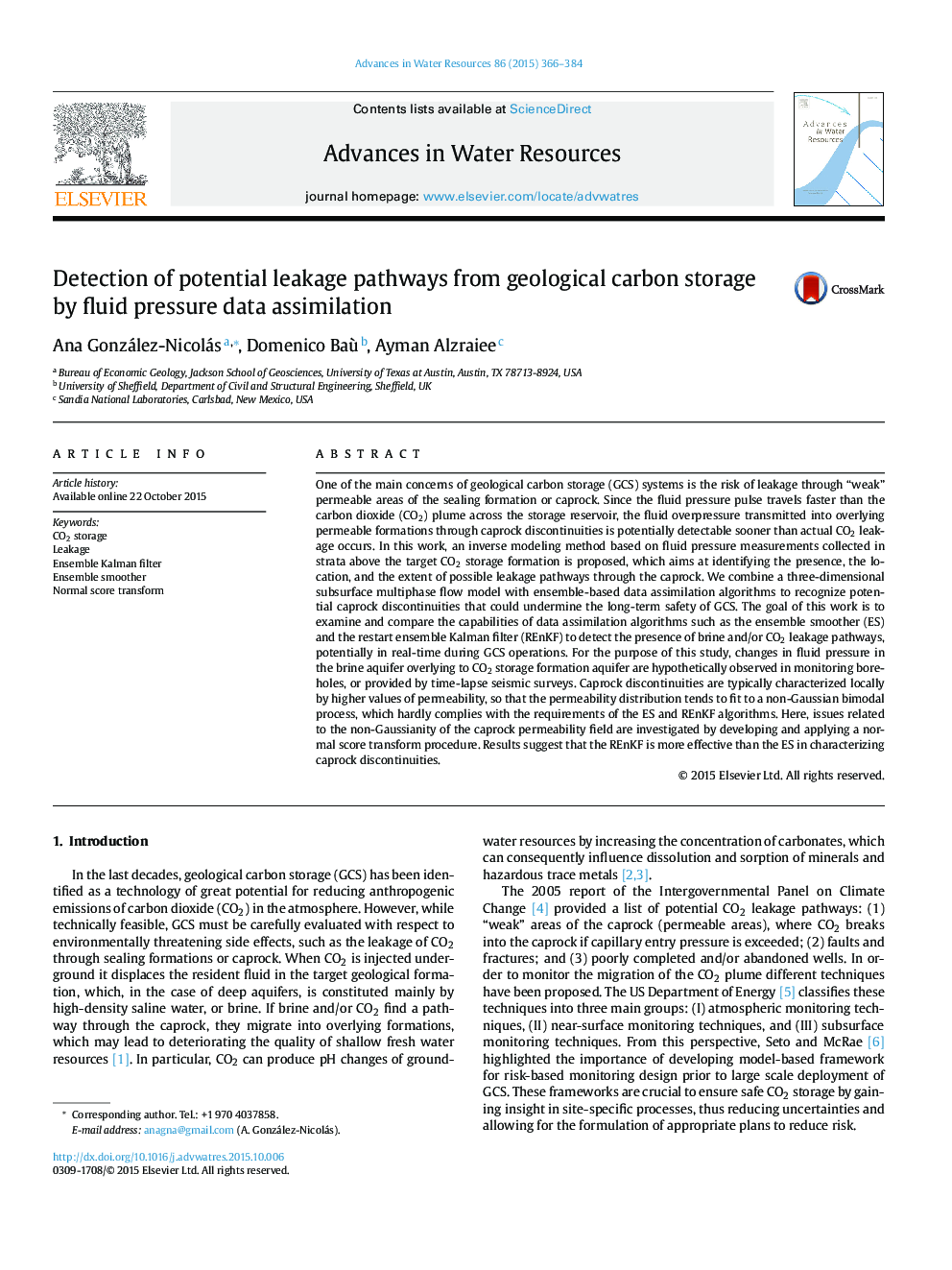| کد مقاله | کد نشریه | سال انتشار | مقاله انگلیسی | نسخه تمام متن |
|---|---|---|---|---|
| 4525307 | 1323753 | 2015 | 19 صفحه PDF | دانلود رایگان |
• We present a methodology to detect leakages from CCS based on DA.
• Fluid pressure data from the upper aquifer is assimilated.
• We compare the capabilities of REnKF and ES data assimilation algorithms.
• We apply normal score transform to caprock permeability fields.
One of the main concerns of geological carbon storage (GCS) systems is the risk of leakage through “weak” permeable areas of the sealing formation or caprock. Since the fluid pressure pulse travels faster than the carbon dioxide (CO2) plume across the storage reservoir, the fluid overpressure transmitted into overlying permeable formations through caprock discontinuities is potentially detectable sooner than actual CO2 leakage occurs. In this work, an inverse modeling method based on fluid pressure measurements collected in strata above the target CO2 storage formation is proposed, which aims at identifying the presence, the location, and the extent of possible leakage pathways through the caprock. We combine a three-dimensional subsurface multiphase flow model with ensemble-based data assimilation algorithms to recognize potential caprock discontinuities that could undermine the long-term safety of GCS. The goal of this work is to examine and compare the capabilities of data assimilation algorithms such as the ensemble smoother (ES) and the restart ensemble Kalman filter (REnKF) to detect the presence of brine and/or CO2 leakage pathways, potentially in real-time during GCS operations. For the purpose of this study, changes in fluid pressure in the brine aquifer overlying to CO2 storage formation aquifer are hypothetically observed in monitoring boreholes, or provided by time-lapse seismic surveys. Caprock discontinuities are typically characterized locally by higher values of permeability, so that the permeability distribution tends to fit to a non-Gaussian bimodal process, which hardly complies with the requirements of the ES and REnKF algorithms. Here, issues related to the non-Gaussianity of the caprock permeability field are investigated by developing and applying a normal score transform procedure. Results suggest that the REnKF is more effective than the ES in characterizing caprock discontinuities.
Journal: Advances in Water Resources - Volume 86, Part B, December 2015, Pages 366–384
